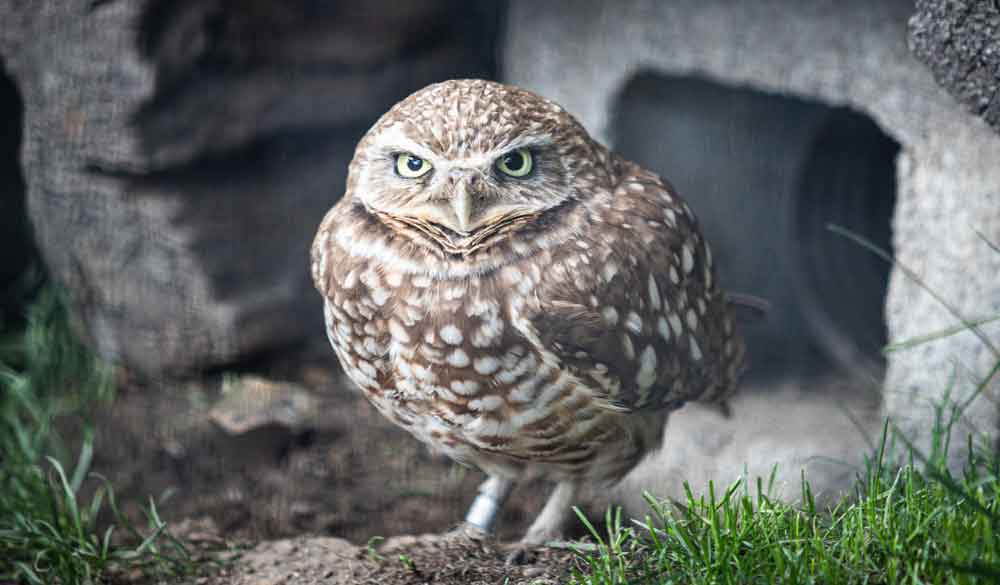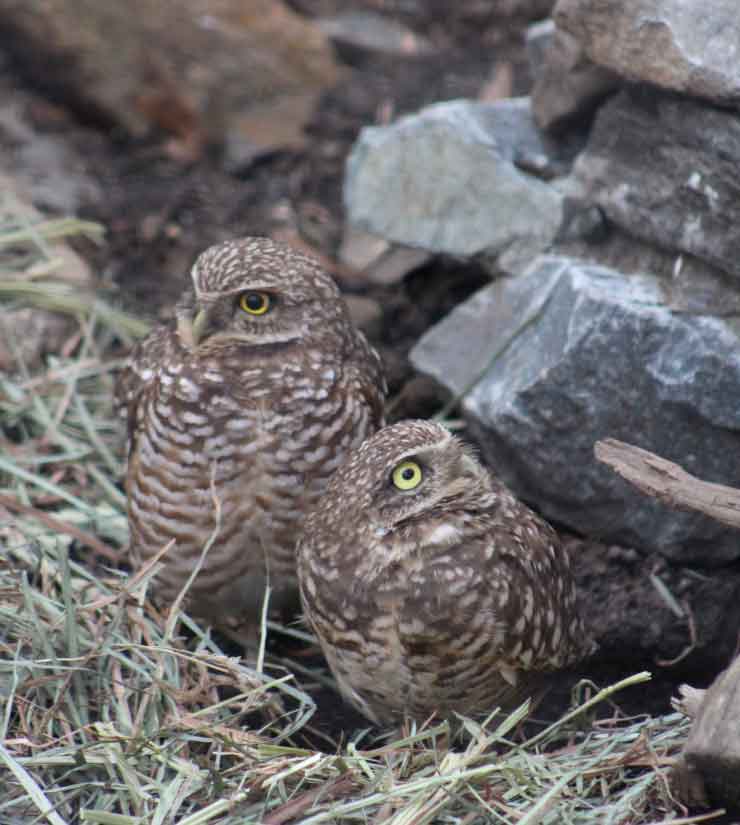Western Burrowing Owl
ATHENE CUNICULARIA HYPUGAEA

HABITAT
Deserts, dunes, grasslands, and savannas
GEOGRAPHIC REGION AND RANGE
The burrowing owl is found in many regions in North and South America.
DIET
Frogs, lizards, insects, and small rodents
PHYSICAL DESCRIPTION
The burrowing owl has a brown body that is speckled with white. It has lanky, featherless legs, and round yellow eyes.
LIFESPAN
Natural Habitat: About 9 years
Under Human Care: Over 10 years
THREATS
Burrowing owls are endangered in Canada, and threatened in Mexico. Due to deforestation in the Amazon rainforest, the number of burrowing owls in South America has significantly declined. Land development in North America has become a major threat to the habitat of these animals.
STATUS
Least Concern
FUN FACTS
The book Hoot by Carl Hiaasen and the 2006 film of the same name, are about a group of teenagers trying to halt construction to save the habitat of burrowing owls in Florida.
When young burrowing owls feel threatened, they hide in their burrow and make rattlesnake-like sounds to scare off predators.
They can turn their heads almost 270 degrees! This allows them to better see their surroundings, as their eyes cannot move in their sockets.
Burrowing owls will incorporate mammal dung into their burrow – this helps keep the burrow stable and a comfortable temperature. It also attracts dung beetles which the owls can capture and eat!
What are AZA Zoos doing for Burrowing Owls?
Their zoo population is managed through conservation breeding programs called Species Survival Plan programs, which ensures genetic diversity and species health. As of 2018, the Association of Zoo & Aquariums (AZA) burrowing owl population was 156 birds at 45 different institutions. Many AZA accredited zoos are working to help these owls recover their former ranges, protect their habitats from development, and study the species behaviors.

